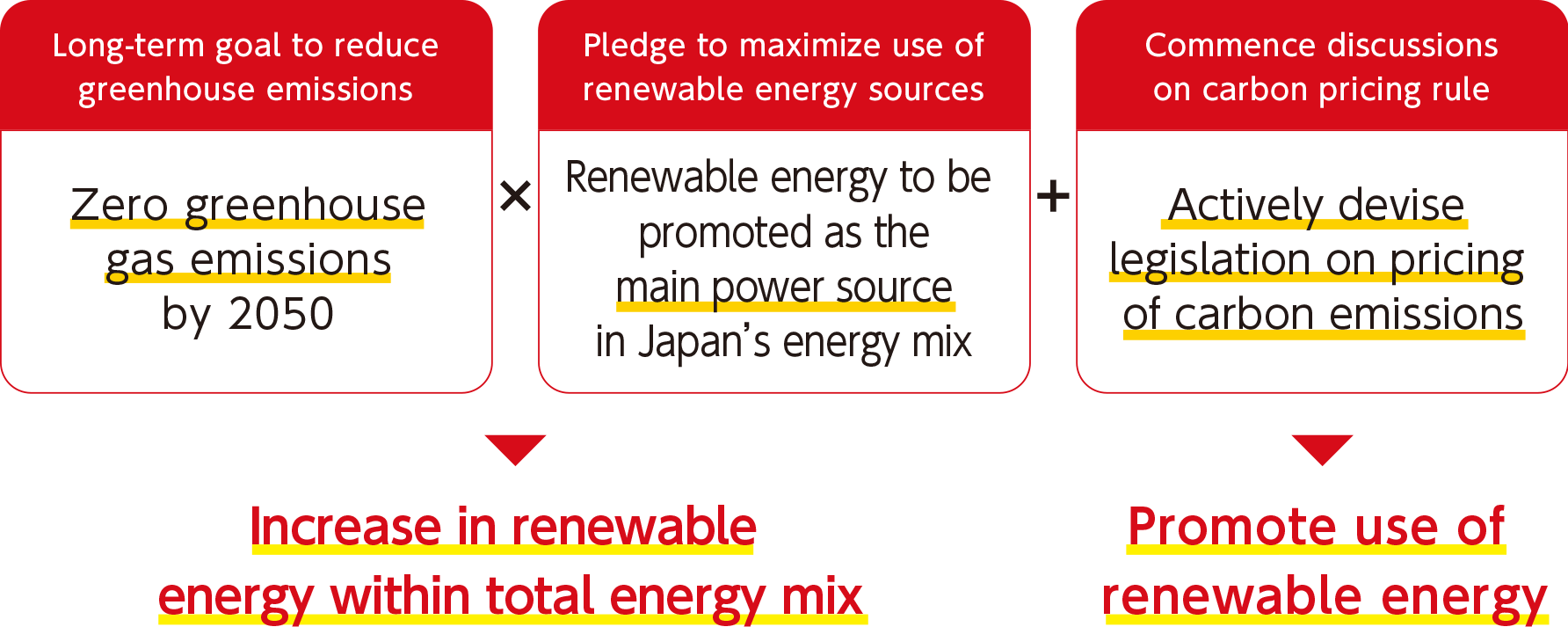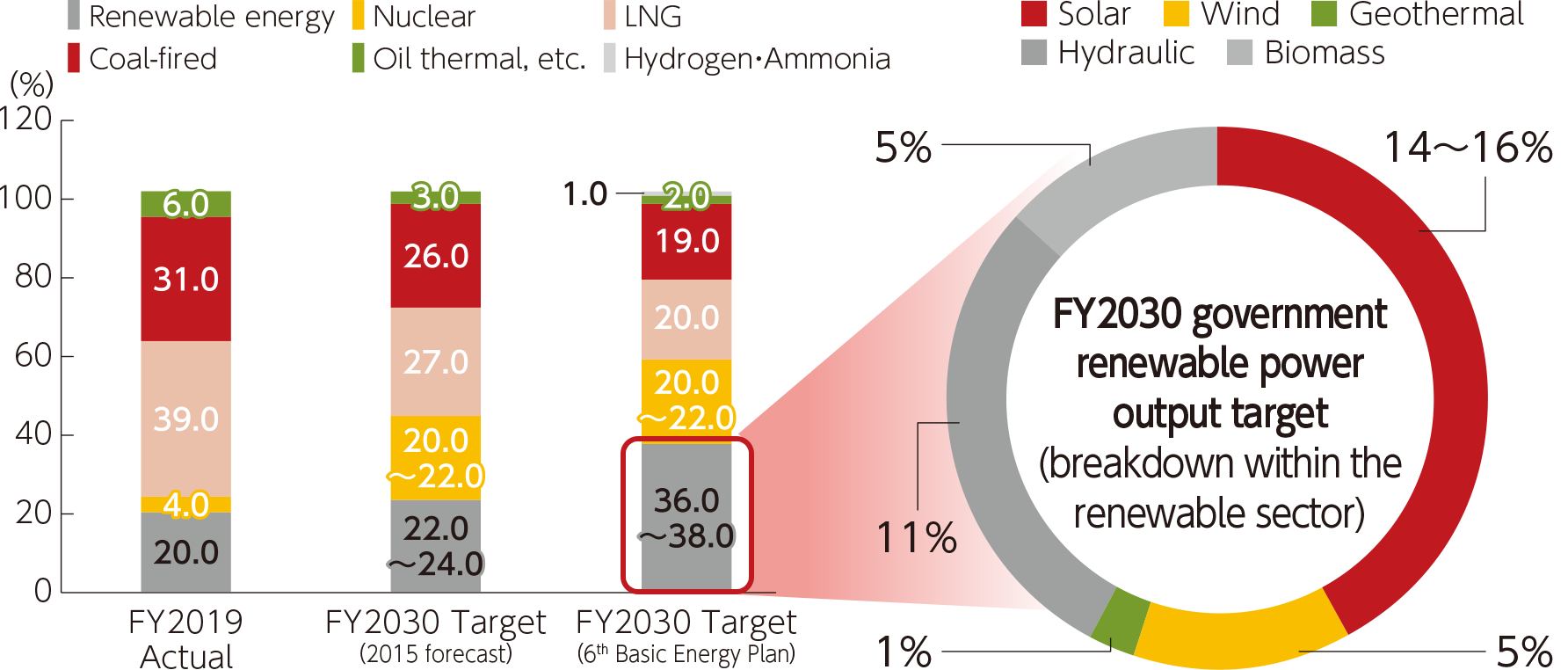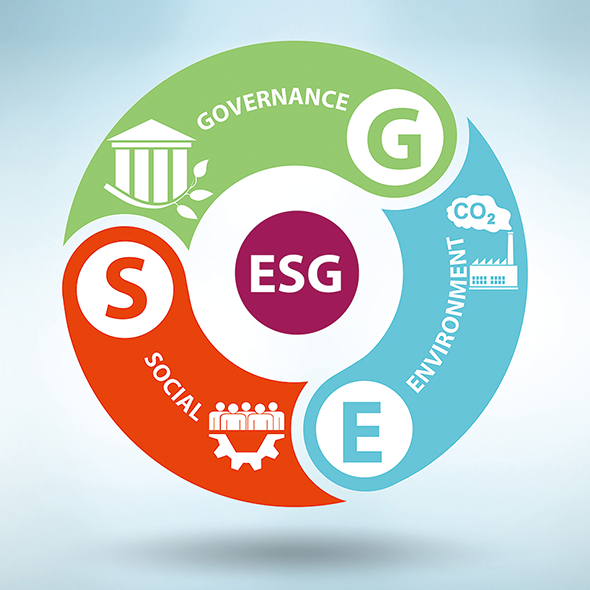Special Feature
Management Interview
What was CSIF’s management performance in the 12th fiscal period?
Although we were generally blessed with good weather throughout the 12th fiscal period, the frequency of output curtailment in the Kyushu Electric Power jurisdiction and other areas increased significantly year on year, and the negative impact on energy output was bigger than ever. The implementation of more frequent and extended output curtailments in March, April and May in particular, not only in the Kyushu Electric Power jurisdiction but also across many other areas including in the jurisdictions of Chugoku Electric Power and Tohoku Electric Power, caused us to turn in our weakest power generation performance to date, with actual energy output reaching 88.05% of projected energy output. As a result, operating revenues fell short of our initial forecast. In terms of operating expenses, maintenance and management costs, depreciation, and administrative fees were all less than initially forecast and we also recorded insurance income in non-operating incomes and expenses; however, these factors were not enough to offset the decline in operating revenues, and operating income, ordinary income and net income all fell short of our initial forecasts. Ultimately, operating revenue was 3,452 million yen, operating income was 1,156 million yen, ordinary income was 1,003 million yen, and net income was 1,003 million yen. As a result, profit distributions per unit decreased 374 yen from the initial forecast, to 2,595 yen. In addition, distributions in excess of earnings were increased by 347 yen, the same amount as the decrease in profit distributions per unit, and the total dividend per unit was set at 3,750 yen, the same amount as the initial forecast.
Output curtailment can be said to have had a major impact in the 12th fiscal period. What is the outlook for output curtailment and what impact will output curtailment have on your performance?

In the 12th fiscal period, output curtailments were implemented more frequently and for longer periods than anticipated. Possible factors contributing to this result include a decrease in power demand due to the effects of energy savings prompted by surging energy prices, in addition to an increase in electricity supply as a result of continued expansion in photovoltaic power generation facilities. However, we assume that the impact of output curtailments will be limited in the 13th fiscal period.
Reasons for this include that more than 80% of total output curtailment has been implemented from March through May in the past, and that 10 of the power plants held by CSIF in the Kyushu Electric Power jurisdiction as of the end of the 12th fiscal period are under the 30-day rule, which sets the maximum number of days of output curtailment at 30 days a year, and the number of days output curtailment has been implemented since the beginning of FY2023 (since April) is approaching 30 days.
In addition, government initiatives to reduce curtailment of renewable energy power output are underway. In May 2023, METI’s Power Grid Working Group proposed measures such as (i) a reduction of minimum output for newly constructed thermal power plants from the current 50% to 30%, and (ii) wide-area output curtailment operation. At the Mass Renewable Energy Introduction / Next Generation Energy Network Committee in June 2023, under the basic policy of reducing curtailment of renewable energy power output, experts agreed to compile new countermeasure packages for the reduction of curtailment of renewable energy power output within 2023 after broadly discussing possible actions to be taken each for supply, demand and grid. In light of the fact that the 6th Basic Energy Plan sets out expansion of renewable energy as a government target as well as the abovementioned government initiatives, we expect output curtailment to have less of an impact in coming fiscal years than they had this year.
Tell us about the third public offering. What were the features of the third public offering and the asset acquisitions?
In the third public offering, we issued a total of 65,100 units through public offering and secondary offering, including exercise of the over-allotment option, and the total offering amount was 7,322 million yen. Furthermore, we completed the borrowing of funds totaling 12,700 million yen through long-term borrowing of 11,600 million yen and short-term borrowing as a bridge loan for consumption tax payment of 1,100 million yen, and we newly acquired five assets in total with a total acquisition cost of 16,780 million yen. Features of these latest acquisitions include that (i) the acquired assets are power plants with comparatively high FIT procurement prices ranging from 32 yen to 40 yen, (ii) the acquired assets are located in the jurisdictions of Tohoku Electric Power, Tokyo Electric Power, Chugoku Electric Power and Kyushu Electric Power, increasing the geographical diversification of our portfolio, and (iii) we acquired CS Kama-shi PP, a third-party developed asset for the first time in addition to four sponsor-developed assets. We have also reduced our concentration risk by increasing portfolio income diversification, with the percentage of total income on a panel output basis accounted for by the three largest assets falling from around 70% before the acquisitions to around 57% after the acquisitions. Moreover, as a result of these latest initiatives, we plan to increase distributions per unit for the 14th and 15th fiscal periods by 25 yen to 3,775 yen. We believe that the third public offering will give a big boost to DPU growth in particular, with DPU growth of 6.61% (194 yen) and 0.96% (29 yen) forecast in the 14th and 15th fiscal periods respectively and DPU growth of 3.74% (223 yen) forecast on a full year basis.
Tell us about your growth outlook and future initiatives.

CSIF had previously been aiming for an asset size of 100 billion yen in the medium term by mainly acquiring assets from the sponsor pipeline; however, we have now almost reached this goal and are, therefore, aiming for growth with a new mid-term target of 200 billion yen in asset size. To increase our asset size to 200 billion yen, we intend to achieve sourcing route diversification by accelerating acquisitions of third-party developed assets in addition to acquisitions from our abundant sponsor pipeline.
The sponsor pipeline currently consists of a total of 21 assets that are already operational, under construction or under development with a total panel output of 350.6 MW, which is a decent size even compared with the 225.3 MW in panel output of CSIF’s current portfolio. Among these, CS Azuma Kofuji Solar Power Plant, which was the sponsor’s largest development project and was among Japan’s largest projects, was transferred to a bridge fund at the end of May 2023. Canadian Solar Asset Management K.K. (CSAM), which is CSIF’s asset manager, concluded a basic agreement with the bridge fund under which CSAM holds preferential negotiating rights to acquire the asset in the future. The advantages of using a bridge fund, which we did for the first time on this occasion, include that this enables (i) adjustment of mismatches between the desired timing of transactions between the seller and CSIF and (ii) allows CSIF to control the number of assets acquired and the scale of acquisitions and to make asset acquisitions more flexibly. We plan to strengthen our growth by diversifying sourcing routes and sourcing methods in this way.
To Carbon Neutrality
PM Suga in October of 2020 set a target to achieve zero greenhouse gas emissions by 2050 in his general policy speech.
Given the policies and forecasts released by the Japanese government, CSIF believes that renewable energy may make up a larger portion of the supply of electricity generated in Japan.
Enlarge image

Aiming to Achieve Carbon Neutrality
In the 6th Basic Energy Plan approved by the Cabinet in October 2021, it was stated that “based on the basic premise of S+3E(Note), we will thoroughly make renewable energy the main source of power, work on the principle of giving top priority to renewable energy, and maximize the introduction of renewable energy while curbing the burden on the public and coexisting with local communities. The government’s target power source ratio for 2030 is expected to be 36-38%, with solar power accounting for the largest share at 14-16%. The government’s target of renewable energy for 2030 is 36-38% of the total power supply, with solar power accounting for the largest share at 14-16%, so the role of solar power will be important for the time being.
(Note)The acronym stands for Safety, Energy Security, Economic Society, and Environment.
Ratio of Renewable Energy in total Energy Mix Target : 36~38%
Solar power is expected to compose 14%~16% of the total renewable energy mix
Enlarge image

Breakdown of greenhouse gas emissions in Japan
Carbon emissions from electricity production makes up 35.7% of total carbon emissions in Japan, and the introduction and wider use of renewable energy are expected to contribute towards lowering Japan’s carbon emissions.
Enlarge image

Based on the judgment that it is essential to conduct a comprehensive review of the regulations that serve as barriers to this process, and to promote the necessary regulatory review and expedite the review process, the government established the “Task Force for Comprehensive Review of Regulations Concerning Renewable Energy, etc.” in November 2020 in order to achieve such regulatory reform with a sense of speed. Many requests for deregulation and removal of regulations have been submitted and studies have begun in the areas of(1)location restrictions, (2)grid regulations, (3)market restrictions, (4)coexistence with local communities, and(5)others.
ESG finance and Japan’s carbon neutrality policies

Investments and loans made by taking into account not only conventional financial information but also non-financial information, comprising environmental, social and governance factors, are called ESG finance. ESG finance has attracted worldwide attention and in the last several years has been expanding dramatically in Japan. Needless to say, ESG finance has had a favorable impact on investments in investment units offered by the Investment Corporation, loans from banks and the issuance of green bonds.
As ESG finance evolves and expands both in terms of quality and volume, moves to respond to the initiatives of the Task Force on Climate-related Financial Disclosures (TCFD) and other opportunities for similar disclosure as well as “100% renewable” (RE100) and net carbon zero target setting are becoming increasingly active among global companies and issuing entities. In other words, investors and banks are positively evaluating these ESG initiatives, while businesses also have become keenly aware of these initiatives as means to improve corporate value.
In Japan, since Prime Minister Yoshihide Suga made a policy speech in October 2020 on the establishment of goals for reducing greenhouse gas emissions and achieving carbon neutrality by 2050, the Japanese government has been accelerating initiatives toward post-carbon society.
In circumstances where new currents are emerging, some forward-thinking global enterprises are now asking their business partners to set emission reduction targets, conduct renewable energy procurement, etc. Initiatives to achieve the post-carbon society are shaping corporate management strategies and leading to the creation of new business opportunities.


